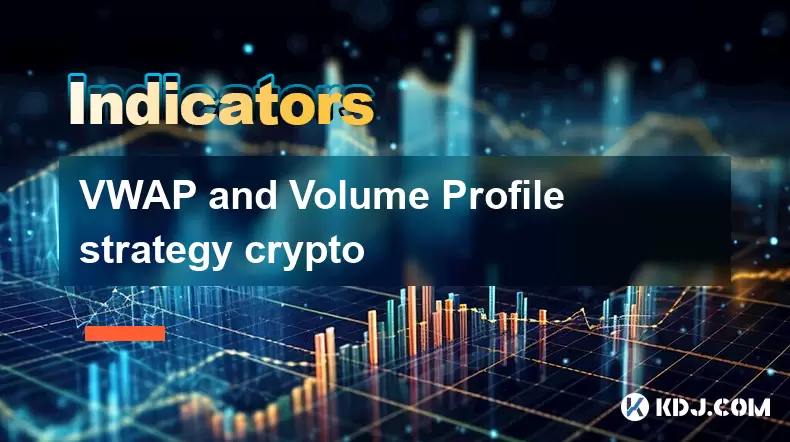-
 Bitcoin
Bitcoin $120400
1.77% -
 Ethereum
Ethereum $3615
7.90% -
 XRP
XRP $3.580
17.84% -
 Tether USDt
Tether USDt $1.001
0.06% -
 BNB
BNB $729.4
1.25% -
 Solana
Solana $179.9
5.04% -
 USDC
USDC $0.0000
0.01% -
 Dogecoin
Dogecoin $0.2311
8.22% -
 TRON
TRON $0.3226
4.04% -
 Cardano
Cardano $0.8490
12.85% -
 Hyperliquid
Hyperliquid $46.45
0.72% -
 Stellar
Stellar $0.4913
8.54% -
 Sui
Sui $4.027
2.00% -
 Chainlink
Chainlink $18.51
11.67% -
 Hedera
Hedera $0.2818
21.51% -
 Avalanche
Avalanche $24.03
7.40% -
 Bitcoin Cash
Bitcoin Cash $508.5
2.90% -
 Shiba Inu
Shiba Inu $0.00001496
3.24% -
 UNUS SED LEO
UNUS SED LEO $8.961
1.83% -
 Toncoin
Toncoin $3.264
3.13% -
 Litecoin
Litecoin $104.6
8.15% -
 Polkadot
Polkadot $4.389
6.11% -
 Uniswap
Uniswap $9.924
10.63% -
 Monero
Monero $337.9
0.49% -
 Pepe
Pepe $0.00001376
2.79% -
 Bitget Token
Bitget Token $4.830
2.46% -
 Ethena USDe
Ethena USDe $1.001
0.05% -
 Dai
Dai $1.000
0.02% -
 Aave
Aave $325.2
1.66% -
 Bittensor
Bittensor $423.7
-0.85%
VWAP and Volume Profile strategy crypto
VWAP and Volume Profile help crypto traders identify key support/resistance levels, trend direction, and high-probability entry points when used together.
Jul 15, 2025 at 04:28 am

Understanding VWAP in Cryptocurrency Trading
VWAP, or Volume Weighted Average Price, is a critical tool for traders in the cryptocurrency market. It calculates the average price of an asset based on both volume and price, offering insights into where most trading activity has occurred. The formula for VWAP is (Price × Volume) / Total Volume over a specified time period. This metric helps traders identify fair value and potential entry or exit points.
In crypto markets, which are known for high volatility and 24/7 trading, VWAP provides a dynamic benchmark that adjusts with real-time volume fluctuations. Traders often use VWAP as a trend filter, observing whether the current price is above or below it to determine bullish or bearish momentum.
How Volume Profile Enhances Market Analysis
Volume Profile focuses on the amount of trading activity at specific price levels rather than across time. It shows where the majority of trading has taken place, highlighting key support and resistance zones. These areas, known as Point of Control (POC) and Value Areas, help traders understand where institutional interest might be concentrated.
In the context of cryptocurrency trading, Volume Profile reveals hidden liquidity imbalances that aren't always visible through traditional volume bars. By analyzing this data, traders can anticipate potential price reversals or breakouts when the price revisits these high-volume zones.
Combining VWAP and Volume Profile for Strategic Entry Points
When used together, VWAP and Volume Profile create a powerful framework for identifying high-probability trade setups. For instance, if the price is above VWAP and also approaching a high-volume area from the Volume Profile, it may signal a strong continuation move.
Traders should look for confluence between these two tools. If the price pulls back to VWAP after a rally and coincides with a major value area, it could present a low-risk buying opportunity. Conversely, if the price drops below VWAP near a significant resistance level identified by Volume Profile, shorting becomes a viable option.
- Ensure you're using the same time frame for both indicators
- Align VWAP direction with Volume Profile structure
- Watch for price rejections near high-volume nodes
Setting Up VWAP and Volume Profile on Trading Platforms
Most modern crypto trading platforms like TradingView, Binance, or Bybit offer built-in tools for both VWAP and Volume Profile. Here’s how to set them up effectively:
- On TradingView, go to the "Indicators" menu and search for VWAP. Once added, it will automatically plot on your chart.
- To enable Volume Profile, navigate to the "Studies" section and select Profile > Volume Profile. You can choose between fixed ranges or session-based profiles depending on your strategy.
- Adjust the settings so that VWAP reflects intraday or multi-day data, depending on your trading style.
- For Volume Profile, consider toggling between visible range and full history mode to compare current price action against past volume distribution.
Make sure the timeframe matches your trading horizon—intraday traders may prefer 1-hour or 4-hour charts, while swing traders might focus on daily or weekly views.
Using VWAP Pullbacks in Conjunction with Volume Nodes
A common strategy among professional crypto traders involves waiting for price pullbacks to VWAP within a trending market, especially when those pullbacks align with key volume nodes from the Volume Profile.
For example, during a strong uptrend, the price often retraces toward VWAP before resuming its upward trajectory. If that retracement lands on a prior support zone identified by Volume Profile, the probability of a bounce increases significantly.
Traders can place buy orders just above the VWAP line with stop-losses slightly below the nearest volume node. Profit targets can be set at previous resistance-turned-support levels or projected extensions based on Volume Profile metrics.
This approach works best when combined with other confirming signals such as order flow or momentum divergence, ensuring that false breakouts are filtered out.
Managing Risk When Using VWAP and Volume Profile Strategies
Risk management remains crucial when applying VWAP and Volume Profile strategies in crypto trading due to the market's inherent volatility. One effective method is to limit position sizes when entering trades based solely on these indicators without additional confirmation.
Set stop-loss orders below significant Volume Profile nodes or beneath the VWAP line, depending on the trade setup. Trailing stops can be useful in capturing extended moves once the price confirms strength beyond a key level.
Additionally, avoid trading during low-volume periods, as VWAP can become skewed, and Volume Profile may not reflect accurate liquidity distribution. Stick to active hours or use longer-term averages to smooth out erratic readings.
Always verify your strategy on a demo account first, testing different combinations of VWAP periods and Volume Profile ranges before committing real capital.
Frequently Asked Questions
Q: Can I use VWAP and Volume Profile on all cryptocurrencies?
Yes, these tools apply universally across all liquid crypto assets including Bitcoin, Ethereum, and altcoins. However, their effectiveness increases with higher trading volumes and clearer price structures.
Q: What timeframes work best with VWAP and Volume Profile?
These tools perform well on 1-hour, 4-hour, and daily charts, but day traders often rely on 15-minute or 30-minute intervals for quicker entries and exits.
Q: Is there a way to automate VWAP and Volume Profile strategies?
While full automation requires custom coding or third-party bots, many platforms allow alerts and conditional orders triggered by price interactions with VWAP or key Volume Profile levels.
Q: Do VWAP and Volume Profile repaint or lag behind price?
VWAP recalculates as new data comes in, so it does have some lag. Volume Profile doesn’t repaint but depends on historical volume, making it more stable and reliable for spotting key price zones.
Disclaimer:info@kdj.com
The information provided is not trading advice. kdj.com does not assume any responsibility for any investments made based on the information provided in this article. Cryptocurrencies are highly volatile and it is highly recommended that you invest with caution after thorough research!
If you believe that the content used on this website infringes your copyright, please contact us immediately (info@kdj.com) and we will delete it promptly.
- XRP, Dogecoin, and Crypto Bills: What's Shaking in the Crypto World?
- 2025-07-18 20:50:13
- Trump, Family Business, and Power: A New Era of Conflicts?
- 2025-07-18 20:30:12
- Trump, Business, & Bitcoin: A Crypto Capitalist's Vision
- 2025-07-18 20:40:12
- MEXC's Q2 Domination: Riding the Crypto Wave to Market Leadership
- 2025-07-18 18:30:12
- Caldera (ERA) Takes Flight: Binance Listing Ignites Crypto Surge
- 2025-07-18 19:10:13
- Hex Trust and Algorand: Institutional Staking Rewards Take Center Stage
- 2025-07-18 19:50:13
Related knowledge

Advanced RSI strategies for crypto
Jul 13,2025 at 11:01am
Understanding the Basics of RSI in Cryptocurrency TradingThe Relative Strength Index (RSI) is a momentum oscillator used to measure the speed and chan...

Crypto RSI for day trading
Jul 12,2025 at 11:14am
Understanding RSI in the Context of Cryptocurrency TradingThe Relative Strength Index (RSI) is a momentum oscillator used to measure the speed and cha...

Crypto RSI for scalping
Jul 12,2025 at 11:00pm
Understanding RSI in the Context of Crypto TradingThe Relative Strength Index (RSI) is a momentum oscillator widely used by traders to measure the spe...

What does an RSI of 30 mean in crypto
Jul 15,2025 at 07:07pm
Understanding RSI in Cryptocurrency TradingRelative Strength Index (RSI) is a momentum oscillator widely used in cryptocurrency trading to measure the...

What does an RSI of 70 mean in crypto
Jul 13,2025 at 06:07pm
Understanding the RSI Indicator in Cryptocurrency TradingThe Relative Strength Index (RSI) is a widely used technical analysis tool that helps traders...

Does RSI work in a bear market for crypto
Jul 16,2025 at 01:36pm
Understanding RSI in Cryptocurrency TradingThe Relative Strength Index (RSI) is a momentum oscillator used by traders to measure the speed and change ...

Advanced RSI strategies for crypto
Jul 13,2025 at 11:01am
Understanding the Basics of RSI in Cryptocurrency TradingThe Relative Strength Index (RSI) is a momentum oscillator used to measure the speed and chan...

Crypto RSI for day trading
Jul 12,2025 at 11:14am
Understanding RSI in the Context of Cryptocurrency TradingThe Relative Strength Index (RSI) is a momentum oscillator used to measure the speed and cha...

Crypto RSI for scalping
Jul 12,2025 at 11:00pm
Understanding RSI in the Context of Crypto TradingThe Relative Strength Index (RSI) is a momentum oscillator widely used by traders to measure the spe...

What does an RSI of 30 mean in crypto
Jul 15,2025 at 07:07pm
Understanding RSI in Cryptocurrency TradingRelative Strength Index (RSI) is a momentum oscillator widely used in cryptocurrency trading to measure the...

What does an RSI of 70 mean in crypto
Jul 13,2025 at 06:07pm
Understanding the RSI Indicator in Cryptocurrency TradingThe Relative Strength Index (RSI) is a widely used technical analysis tool that helps traders...

Does RSI work in a bear market for crypto
Jul 16,2025 at 01:36pm
Understanding RSI in Cryptocurrency TradingThe Relative Strength Index (RSI) is a momentum oscillator used by traders to measure the speed and change ...
See all articles

























































































